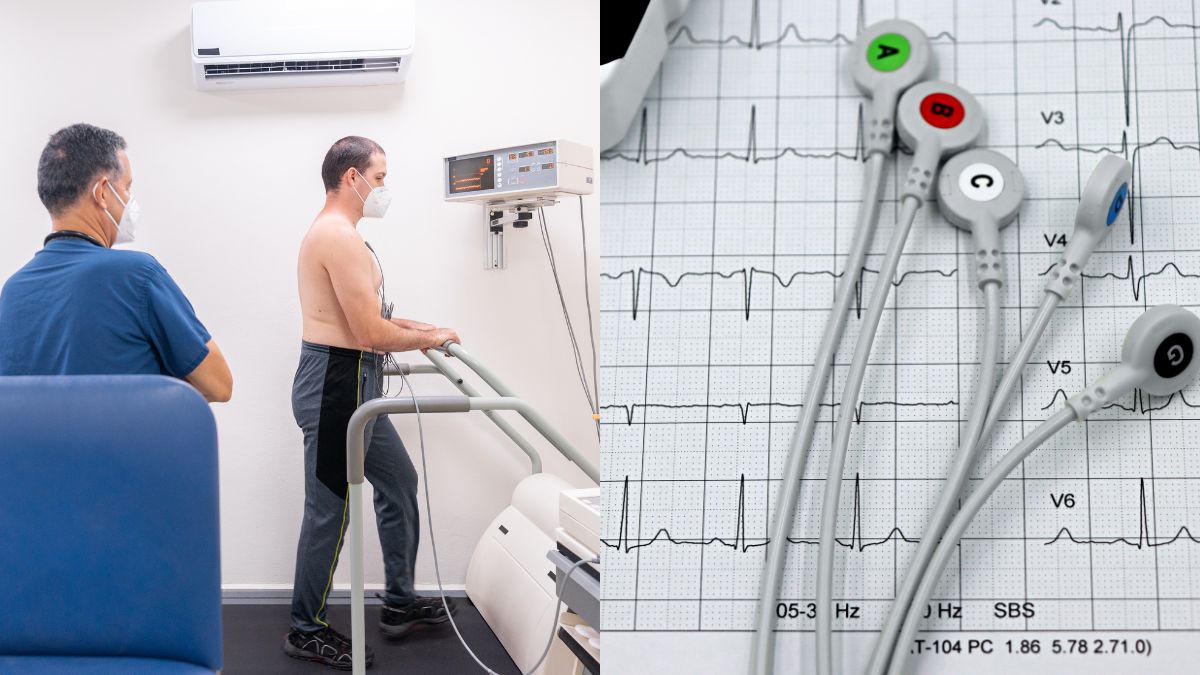
Your heart is one of the most important organs of the body and it is imperative that you take care of your heart health. American swimmer Michael Phelps said, “The problem with heart disease is that the first symptom is often fatal.” This also highlights that it is often difficult to diagnose the condition early if people are only dependent on the symptoms.
Sometimes the first sign of heart disease is chest pain, chest tightness, shortness of breath, numbness and pain in the legs and arms which is eventually followed by a heart attack. A lot of times heart attacks can turn out to be fatal. Other times, people are diagnosed with heart disease. However, if an individual undergoes regular check-ups, such conditions can be diagnosed and one can seek treatment for the same. After a certain age (40 years), it is important that people undertake certain tests at regular intervals to keep a check on their heart health. Here are some tests to check your heart health.
This test involves exercising on a treadmill or stationary bike while your heart’s activity is monitored through an ECG (electrocardiogram). The goal is to assess how your heart responds to physical stress. It helps detect coronary artery disease, irregular heart rhythms and how your heart functions under stress, giving doctors important information about your heart’s fitness.
An ultrasound of the heart that uses sound waves to create images of the heart’s structure and assess how well the heart is pumping blood. It helps detect heart valve problems, heart failure, blood clots and other abnormalities.
An ECG records the electrical activity of the heart through sensors placed on the chest. It can detect issues like arrhythmias, heart attacks or structural problems in the heart. It is a non-invasive test that helps identify heart rhythm irregularities, signs of previous heart attacks and other heart conditions early on.
Regular blood pressure readings can be taken at home or in a clinic to track blood pressure levels over time. High blood pressure (hypertension) is a significant risk factor for heart disease. Monitoring blood pressure regularly can help manage the risk.
Blood tests measure cholesterol levels (LDL, HDL, total cholesterol) and triglycerides. These tests can also check for other markers like C-reactive protein (CRP) that indicate inflammation. High levels of LDL cholesterol and triglycerides increase the risk of plaque buildup in arteries, leading to heart disease.
A procedure in which a contrast dye is injected into the coronary arteries via a catheter to visualise blockages or narrowing of the arteries using X-ray imaging. It is the most accurate test for detecting coronary artery disease. If blockages are found, doctors might recommend treatment options like stenting or bypass surgery.
A non-invasive imaging test that uses powerful magnets and radio waves to create detailed images of the heart’s structure, tissue and blood flow. It gives high-resolution images that can reveal heart muscle damage, congenital heart defects and the health of heart valves. It’s particularly useful for assessing heart disease, cardiomyopathy and the impact of previous heart attacks.
ALSO READ: Diabetes Symptoms: 5 signs of high blood sugar you can spot on your face
© 2009-2025 Independent News Service. All rights reserved.
